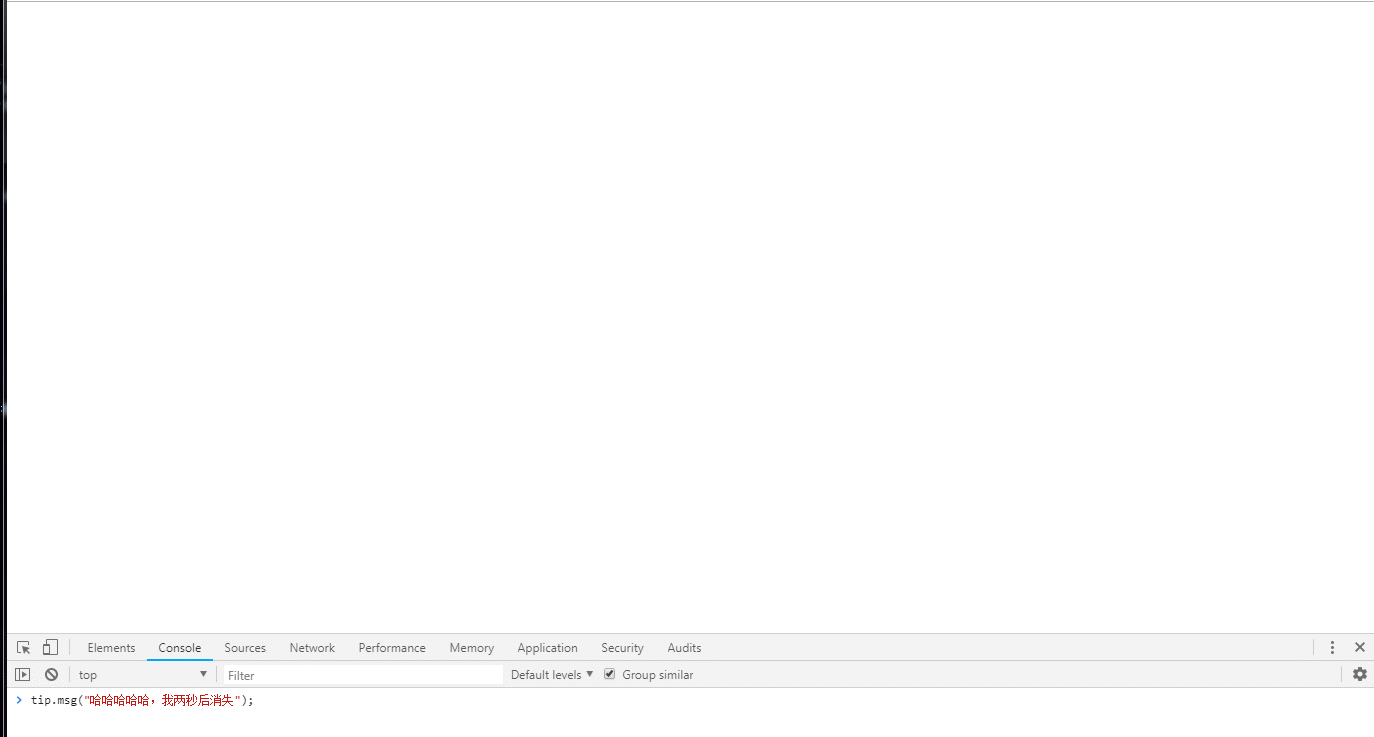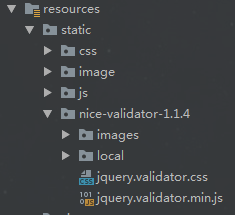在RN中FlatList是一个高性能的列表组件,它是ListView组件的升级版,性能方面有了很大的提升,当然也就建议大家在实现列表功能时使用FlatList,尽量不要使用ListView,更不要使用ScrollView。既然说到FlatList,那就先温习一下它支持的功能。
- 完全跨平台。
- 支持水平布局模式。
- 行组件显示或隐藏时可配置回调事件。
- 支持单独的头部组件。
- 支持单独的尾部组件。
- 支持自定义行间分隔线。
- 支持下拉刷新。
- 支持上拉加载。
- 支持跳转到指定行(ScrollToIndex)。
今天的这篇文章不具体介绍如何使用,如果想看如何使用,可以参考我GitHub https://github.com/xiehui999/helloReactNative的一些示例。今天的这篇文章主要介绍我使用过程中感觉比较大的坑,并对FlatList进行的二次封装。
接下来,我们先来一个简单的例子。我们文章也有这个例子开始探讨。
//定义空布局
emptyComponent = () => {
return <View style={{
height: '100%',alignItems: 'center',justifyContent: 'center',}}>
<Text style={{
fontSize: 16
}}>暂无数据下拉刷新
在上面的代码,我们主要看一下ListemptyComponent,它表示没有数据的时候填充的布局,一般情况我们会在中间显示显示一个提示信息,为了介绍方便就简单展示一个暂无数据下拉刷新。上面代码看起来是暂无数据居中显示,但是运行后,你傻眼了,暂无数据在最上面中间显示,此时高度100%并没有产生效果。当然你尝试使用flex:1,将View的高视图填充剩余全屏,不过依然没有效果。
那为什么设置了没有效果呢,既然好奇,我们就来去源码看一下究竟。源码路径在react-native-->Libraries-->Lists。列表的组件都该目录下。我们先去FlatList文件搜索关键词ListemptyComponent,发现该组件并没有被使用,那就继续去render
MetroListView(内部实行是ScrollView)是旧的ListView实现方式,VirtualizedList是新的性能比较好的实现。我们去该文件
再此处看到我们定义的ListemptyComponent外面包了一层view,该view加了样式inversionStyle。
样式:
verticallyInverted: {
transform: [{scaleY: -1}],},horizontallyInverted: {
transform: [{scaleX: -1}],
上面的样式就是添加了一个动画,并没有设置高度,所以我们在ListemptyComponent使用height:'100%'或者flex:1都没有效果,都没有撑起高度。
为了实现我们想要的效果,我们需要将height设置为具体的值。那么该值设置多大呢?你如果给FlatList设置一个样式,背景属性设置一个颜色,发现FlatList是默认有占满剩余屏的高度的(flex:1)。那么我们可以将ListemptyComponent中view的高度设置为FlatList的高度,要获取FlatList的高度,我们可以通过onLayout获取。
代码调整:
<FlatList
data={this.state.dataList} extraData={this.state}
refreshing={this.state.isRefreshing}
onRefresh={() => this._onRefresh()}
keyExtractor={(item,backgroundColor: '#D6D6D6'
}}/>}
renderItem={this._renderItem}
onLayout={e => this.<a href="https://www.jb51.cc/tag/fhe/" target="_blank" class="keywords">fhe</a>ight = e.nativeEvent.layout.height}
Li<a href="https://www.jb51.cc/tag/stem/" target="_blank" class="keywords">stem</a>ptyComponent={this.emptyComponent}/>//定义空布局
emptyComponent = () => {
return <View style={{
height: this.fHeight,}}>
<Text style={{
fontSize: 16
}}>暂无数据
通过上面的调整发现在Android上运行时达到我们想要的效果了,但是在iOS上,不可控,偶尔居中显示,偶尔又显示到最上面。原因就是在iOS上onLayout调用的时机与Android略微差别(iOS会出现emptyComponent渲染时onLayout还没有回调,此时fheight还没有值)。
所以为了将变化后的值作用到emptyComponent,我们将fheight设置到state中
这样设置后应该完美了吧,可是....在android上依然能完美实现我们要的效果,在iOS上出现了来回闪屏的的问题。打印log发现值一直是0和测量后的值来回转换。在此处我们仅仅需要是测量的值,所以我们修改onLayout
经过处理后,在ios上终于完美的实现我们要的效果了。
除了上面的坑之外,个人感觉还有一个坑就是onEndReached,如果我们实现下拉加载功能,都会用到这个属性,提到它我们当然就要提到onEndReachedThreshold,在FlatList中onEndReachedThreshold是一个number类型,是一个他表示具体底部还有多远时触发onEndReached,需要注意的是FlatList和ListView中的onEndReachedThreshold表示的含义是不同的,在ListView中onEndReachedThreshold表示具体底部还有多少像素时触发onEndReached,默认值是1000。而FlatList中表示的是一个倍数(也称比值,不是像素),默认值是2。
那么按照常规我们看下面实现
然后我们在componentDidMount中加入下面代码
也就是进入开始加载第一页数据,下拉的执行onEndReached加载更多数据,并更新数据源dataList。看起来是完美的,不过.....运行后你会发现onEndReached一直循环调用(或多次执行),有可能直到所有数据加载完成,原因可能大家也能猜到了,因为_onRefresh加载数据需要时间,在数据请求到之前render方法执行,由于此时没有数据,onEndReached方法执行一次,那么此时相当于加载了两次数据。
至于onEndReached执行多少次就需要onEndReachedThreshold的值来定了,所以我们一定要慎重设置onEndReachedThreshold,如果你要是理解成了设置像素,设置成了一个比较大的数,比如100,那完蛋了....个人感觉设置0.1是比较好的值。
通过上面的分析,个人感觉有必要对FlatList进行一次二次封装了,根据自己的需求我进行了一次二次封装
export const FlatListState = {
IDLE: 0,LoadMore: 1,Refreshing: 2
};
export default class Com extends Component {
static propTypes = {
refreshing: PropTypes.oneOfType([PropTypes.bool,PropTypes.number]),};
state = {
listHeight: 0,}
render() {
var {ListemptyComponent,ItemSeparatorComponent} = this.props;
var refreshing = false;
var emptyContent = null;
var separatorComponent = null
if (ListemptyComponent) {
emptyContent = React.isValidElement(ListemptyComponent) ? ListemptyComponent :
} else {
emptyContent =
}
if (ItemSeparatorComponent) {
separatorComponent = React.isValidElement(ItemSeparatorComponent) ? ItemSeparatorComponent :
onRefresh = () => {
console.log("FlatList:onRefresh");
if ((typeof this.props.refreshing === "boolean" && !this.props.refreshing) ||
typeof this.props.refreshing === "number" && this.props.refreshing !== FlatListState.LoadMore &&
this.props.refreshing !== FlatListState.Refreshing
) {
this.props.onRefresh && this.props.onRefresh()
}
};
onEndReached = () => {
console.log("FlatList:onEndReached");
if (typeof this.props.refreshing === "boolean" || this.props.data.length == 0) {
return
}
if (!this.props.pageSize) {
console.warn("pageSize must be set");
return
}
if (this.props.data.length % this.props.pageSize !== 0) {
return
}
if (this.props.refreshing === FlatListState.IDLE) {
this.props.onEndReached && this.props.onEndReached()
}
};
renderFooter = () => {
let footer = null;
if (typeof this.props.refreshing !== "boolean" && this.props.refreshing === FlatListState.LoadMore) {
footer = (
propTypes中我们使用了oneOfType对refreshing类型进行限定,如果ListemptyComponent有定义,就是使用自定义分View,同理ItemSeparatorComponent也可以自定义。
在下拉加载数据时定义了一个ListFooterComponent,用于提示用户正在加载数据,refreshing属性如果是boolean的话,表示没有下拉加载功能,如果是number类型,pageSize必须传,数据源长度与pageSize取余是否等于0,判断是否有更多数据(最后一次请求的数据等于pageSize时才有更多数据,小于就不用回调onEndReached)。当然上面的代码也很简单,相信很容易看懂,其它就不多介绍了。以上就是本文的全部内容,希望对大家的学习有所帮助,也希望大家多多支持编程之家。






